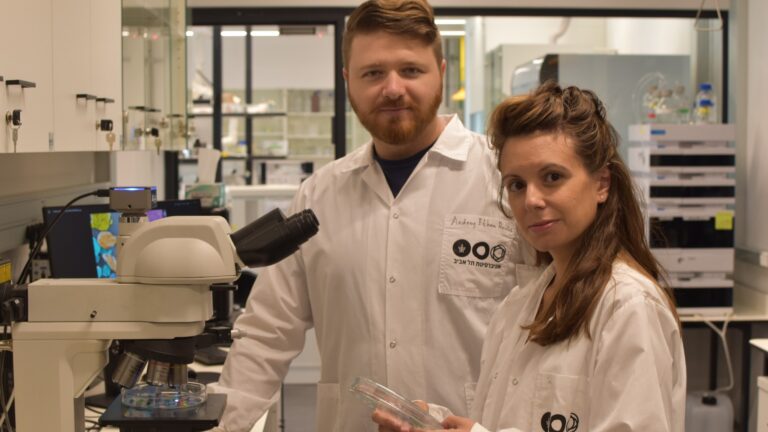In a disturbing new study, researchers have discovered that the Israeli coastline is contaminated with over two tons of toxic microplastics, and that the beaches of Tel Aviv and Hadera are the most polluted.
The study, which was conducted by Tel Aviv University in collaboration with the Mediterranean Sea Research Center of Israel, took place over the course of 2021. Sand samples were collected from six areas along the coast: Ashkelon, Rishon LeZion, Tel Aviv, Hadera, Dor Beach and Haifa.
The samples underwent particle count, mass measurements, image analysis and chemical analysis to identify the polymer the plastic was made of, as well as the elements adsorbed onto the microplastic particles.
“It was interesting to see that plastics of terrestrial origin, such as food packaging, were more dominant than plastics of marine origin such as fishing nets,” said doctoral student Andrey Ethan Rubin, who led the study with master’s student Limor Omeysi, both from the laboratory of Ines Zucker of the Fleischman Faculty of Engineering and the Porter School of the Environment and Earth Sciences.
“This indicates a need for better regulation of coastal waste,” she added.

Microplastics take hundreds or even thousands of years to decompose, wreak havoc on the environment and are often consumed by marine animals, which are in turn consumed by humans.
They have been found in marine organisms from plankton to whales and have been traced in drinking water. Earlier this year, Rubin and Zucker published research that showed microplastics in the ocean can bind with harmful chemicals, making them even more toxic.
The new research findings, published in the scientific journal Marine Pollution Bulletin, show that the level of contamination on beaches in Tel Aviv and Hadera was four times worse than at beaches tested in Rishon LeZion and Dor, the two with the lowest concentration of microplastic particles.
The researchers believe that the high level of pollution on the beaches of Tel Aviv and Hadera is because both are located near stream estuaries — the Yarkon in Tel Aviv and Nahal Alexander in Hadera — and the streams carry microplastic particles into the sea, intensifying contamination on the beach.
For example, the researchers say that Nahal Alexander collects leachate from untreated sewage from the West Bank, as well as waste from agricultural and industrial areas located near the riverbeds. Similarly, microplastics accumulate at the Yarkon River from the industrial centers in Tel Aviv.
However, even in the Dor Beach nature reserve, which is cleaned frequently, a considerable amount of microplastic particles were found.
“Our research reveals that the Israeli coastline likely contains over two tons of microplastic waste,” says Rubin.
“Environmental conditions slowly break this plastic down into even smaller particles. The smaller the plastic particles, the harder it is to remove them from the environment, and the more dangerous they are to the environment and to our health. The microplastic particles that drift into the sea are swallowed by fish, and their remains eventually reach humans.”
Zucker added, “It would appear that exposure to microplastic waste is inevitable. We are working on assessing the environmental and health impacts that may arise given the prevalence and high concentrations of the particles that we found. Regulatory steps are required in order to reduce Israel’s contribution to microplastic pollution in the Mediterranean.”
For more information on reducing plastic use, read our article, “12 simple ways to use less plastic in your life.”

Fighting for Israel's truth
We cover what makes life in Israel so special — it's people. A non-profit organization, ISRAEL21c's team of journalists are committed to telling stories that humanize Israelis and show their positive impact on our world. You can bring these stories to life by making a donation of $6/month.









